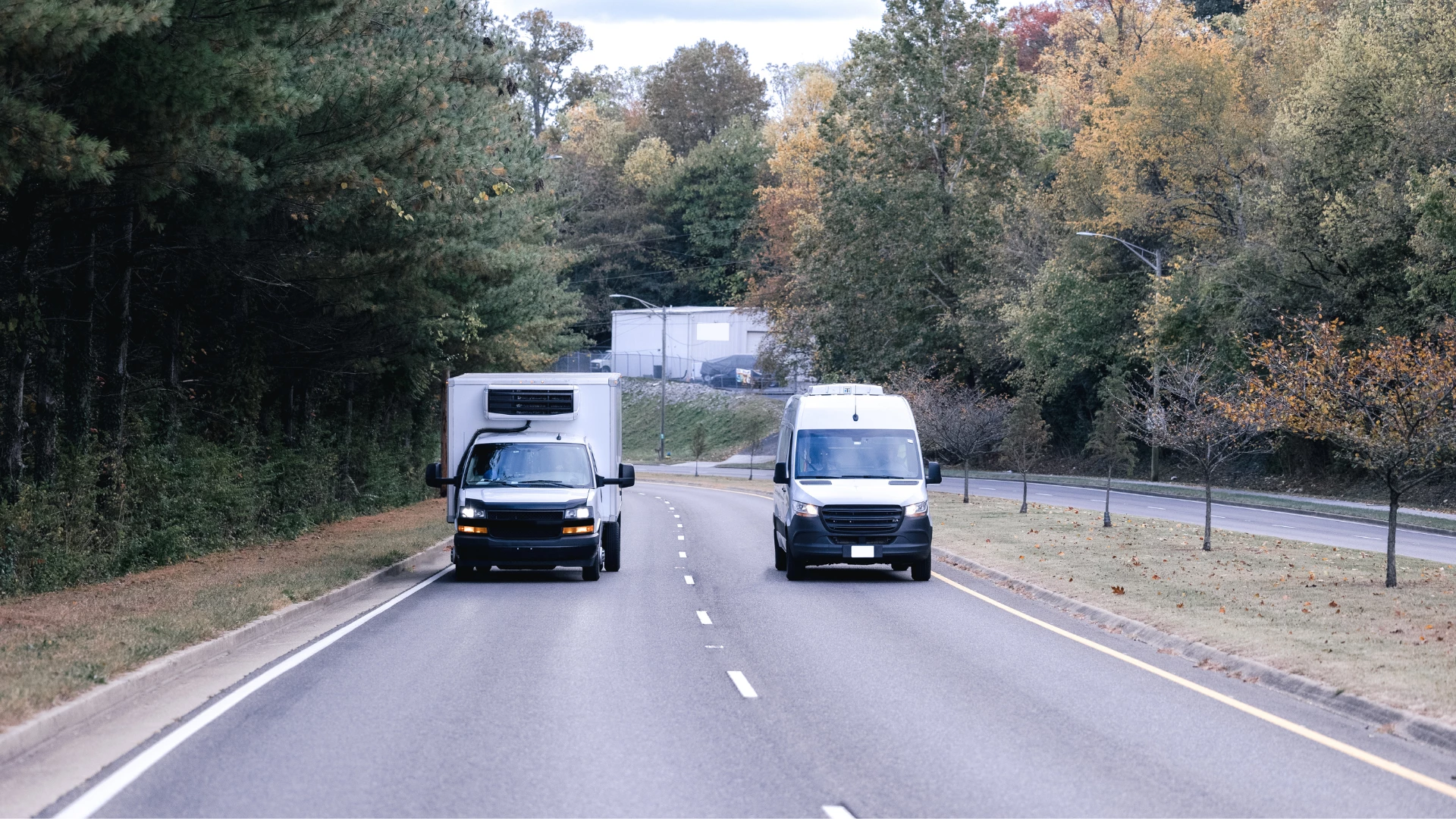
We are all used to fresh produce arriving as crisp as the day it was harvested or a life-saving vaccine delivered with its potency intact. But behind these common things lie many complex processes forming the science of temperature-controlled delivery.
How Temperature-Controlled Delivery Works
Temperature-controlled delivery is all about precision. From pharmaceuticals that require consistent cool storage to perishable foods kept fresh, temperature-controlled delivery services ensure these products reach the customer in perfect condition.
Temperature-controlled shipping operates across multiple levels. Some goods need refrigerated truck delivery service, keeping products at cool, steady temperatures. Others require freezing preserving items until they reach their destination. For certain goods, an ambient, mildly regulated environment is enough. These different levels of temperature control help meet the specific needs of each product type, preventing spoilage or quality degradation.
Today’s high standard of temperature-controlled delivery is granted by advanced equipment and technology. Modern refrigerated trucks are equipped with temperature control systems and GPS tracking, allowing real-time adjustments to ensure stable conditions. Specialized sensors monitor fluctuations, instantly alerting teams if temperatures shift. Together, these tools create a dependable cold chain within the supply chain, moving products safely from origin to destination without temperature compromise.
Temperature-Controlled Delivery at Its Core
Temperature-controlled delivery is more than just moving goods. It’s a coordinated system with critical components across the supply chain, from storage to handling.
Storage
Temperature-controlled warehouses provide the foundation of cold chain logistics, safeguarding goods until they’re ready for transportation. Equipped with precise temperature regulation, these facilities store items in carefully managed environments.
Transportation
In temperature-controlled delivery services, specialized vehicles like refrigerated trucks are outfitted with cooling systems that keep temperatures steady, even over long distances. Real-time temperature monitoring ensures that any fluctuation is caught instantly, maintaining consistency in transit.
Handling and Monitoring
A temperature-sensitive delivery involves strict protocols for loading and unloading, reducing the risk of exposure to non-regulated conditions. Workers are trained to manage these steps with care, ensuring products avoid temperature dips or rises that could compromise quality. Monitoring continues throughout the journey, with IoT sensors and GPS-enabled tracking systems providing real-time data.
Technology has revolutionized temperature-controlled shipping. Innovations like IoT sensors and GPS tracking now allow real-time monitoring, making it possible to maintain stable conditions and catch issues before they escalate.
Behind every successful temperature-controlled delivery is well-trained staff. Employees handling these goods understand the importance of stability and compliance, meticulously following protocols for each product’s specific needs.

Key Acts and Regulations Governing Temperature-Controlled Delivery
Temperature-controlled delivery is tightly regulated to protect consumers and ensure products retain quality. Organizations like the FDA (Food and Drug Administration) in the United States and the EMA (European Medicines Agency) in Europe set stringent guidelines to maintain temperature-sensitive delivery, especially for high-stakes goods like pharmaceuticals and perishables.
One of the foundational standards in temperature-controlled delivery services is Good Distribution Practice (GDP). GDP establishes strict requirements for handling, storing, and transporting pharmaceuticals. This ensures that products like vaccines and medications reach consumers with their potency intact.
The Food Safety Modernization Act (FSMA), on the other side, governs temperature-controlled delivery, specifically targeting food safety. Under FSMA, any business involved in transporting perishable food must adhere to guidelines that prevent contamination, spoilage, and unsafe handling practices. The act mandates procedures like routine temperature checks, sanitary equipment use, and proper documentation.
Beyond GDP and FSMA, Cold Chain Management Requirements set specific temperature control guidelines across various product categories, particularly pharmaceuticals, perishables, and chemicals. These requirements specify temperature ranges that must be maintained during transport, adding layers of protection to temperature-sensitive delivery. Industry-specific guidelines often supplement these requirements, setting an additional benchmark for quality control in temperature-controlled delivery services.
While the fundamentals of temperature-controlled shipping apply universally, local and international regulations may vary. Some regions implement stricter guidelines, while others may follow the framework set by larger organizations like the FDA or EMA. Despite these differences, the principles remain similar: consistent temperature control is essential to quality.
Benefits and Challenges of Temperature-Controlled Delivery
Temperature-controlled delivery services safeguard product quality and safety, ensuring items like pharmaceuticals, perishable foods, and sensitive chemicals retain their integrity from origin to destination. However, temperature-controlled delivery is not without its challenges. One of the primary obstacles is the high cost and complexity associated with maintaining consistent temperature conditions. Specialized equipment, like refrigerated trucks and temperature monitoring systems, comes at a premium, as does the training required for personnel.
Another problem is temperature excursions or fluctuations outside the required range that can happen during transport. These excursions put products at risk and can lead to penalties for non-compliance if regulations aren’t met. To handle these challenges, temperature-controlled delivery services require a high degree of monitoring and rapid response.
The Future of Temperature-Controlled Delivery Services
As regulatory standards evolve, logistics providers adopt new practices, embrace new technologies, and train to maintain high-quality service. Temperature-controlled delivery will remain a fundamental part of the supply chain, meeting the growing demand for safe, reliable transport solutions.
Back to blogYou may also be interested in

Solving the Refrigerated Freight Bottleneck: A Customer’s Guide to Reefer Expedite
The refrigerated freight is one of the most demanding segments of logistics. Unlike dry freight, temperature-sensitive goods don’t get second chances. If a load arrives late or the temperature drifts outside compliance ranges, the shipment can lose its entire value. For customers, that means one mistake can turn into thousands of dollars in losses and […]

Airport Delays and Temperature Risk: How Forwarders Mitigate the Gap
Airports are the heartbeat of global trade, connecting perishable goods to every corner of the world. But for refrigerated freight, airports are also one of the riskiest points in the journey. Unlike long-haul reefer trucking, where temperature can be monitored and maintained throughout, airports introduce multiple variables, such as customs clearance, handling procedures, flight schedules, […]
